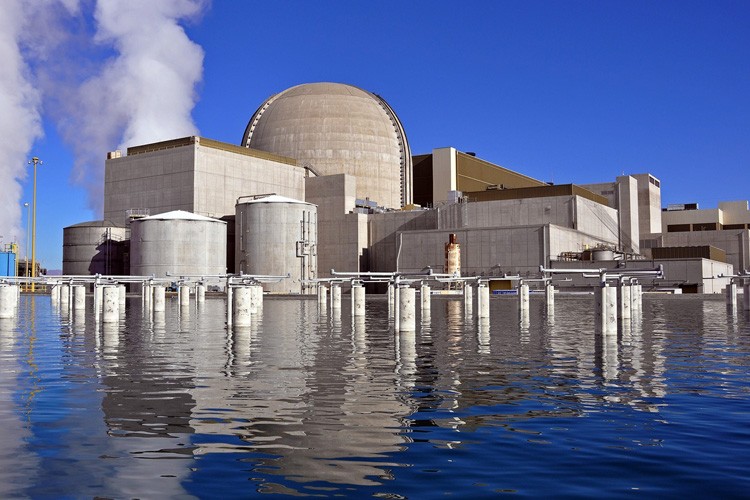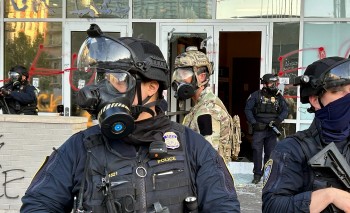Top 10 Countries Have the Most Nuclear Reactors in the World
► Top 9 Worst Nuclear Disasters In the World of All Time
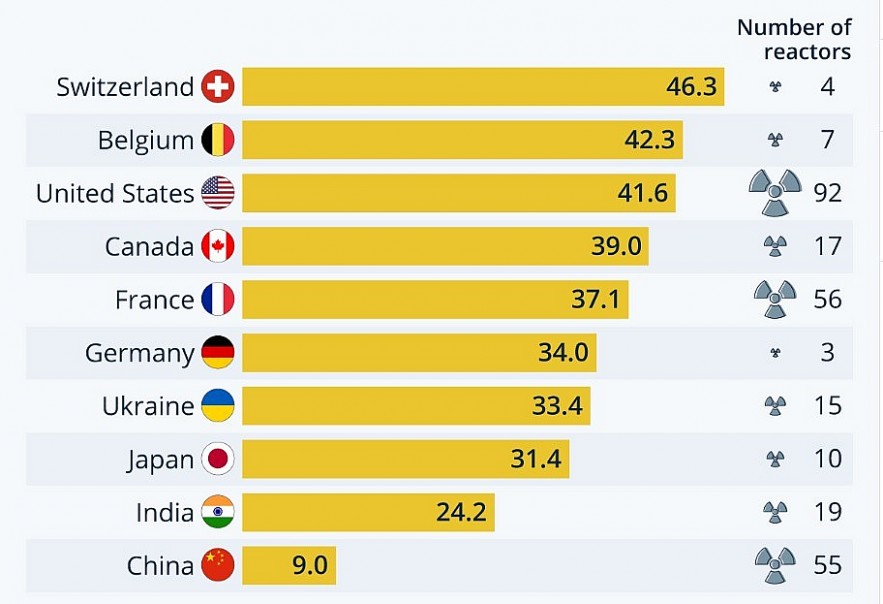 |
| Top 10 Countries Have the Most Nuclear Reactors |
According to the State of Nuclear Industry Report, global nuclear power production rose by 3.9% in 2021 following a similar decline the previous year.
As of early 2024, there were 411 nuclear reactors operating worldwide, a decrease of more than 18 from 2012. There are currently 53 reactors under construction and 29 reactors in long-term storage. That's more than half in China and India.
Because of the rapid growth of renewable energy sources and the public's negative perception of nuclear energy after tragedies like Chernobyl and Fukushima, nuclear power has received less investment and development.
The share of nuclear power in the global electricity production has dropped from 17.5% in 1996 to just 9.8% in 2021 due to the nuclear policies of many countries being abandoned or postponed.
How many countries are operating nuclear reactors: 15 or 33?
As per the aforementioned report, there are 33 countries in the world that have nuclear power reactors in operation at the moment, and only 15 countries are actively pursuing nuclear technology. Notably, two of these countries, Belarus and the United Arab Emirates (UAE), only began producing nuclear electricity in 2020.
The world's nuclear power with the fastest rate of growth is China. There are currently 55 nuclear reactors in the nation, the majority of which have only been linked to the grid in the last ten years. Nuclear power was first used in the country in the early 1990s.
The US had 92 reactors operating, making it the nuclear energy superpower of the world. But compared to a decade ago, there are 12 fewer reactors now.
Japan has had the biggest decline in nuclear reactor count over the last ten years, with 34 reactors decommissioned.
Japan, which currently has just ten reactors in service, is anticipated to formally stop building new facilities very soon.
Only three nations with nuclear energy programs have completed the shutdown of all of their reactors to date. These were Lithuania in 2009, Italy in 1987, and Kazakhstan in 1998. In response to the energy crisis, Germany recently extended the operation of a few reactors; however, by 2020 or 2023, nuclear power production is anticipated to cease.
The Oldest and Youngest Nuclear Reactors in the World
With a mean age of 41.6 years, the 92 nuclear reactors in operation in the United States are the third oldest in the world. Only Belgium's (42.3 years) and Switzerland's (46.3 years) nuclear fleets are older.
According to the World Nuclear Industry Status Report, the United States is currently one of only 15 nations actively pursuing nuclear energy. This includes more recent nuclear programs launched in the last ten years in the United Arab Emirates, Belarus, and Iran, as well as a more recent program in China that began generating electricity in 1991 and currently has a mean reactor fleet age of only nine years.
Despite having a nuclear energy program in place since 1969, India has seen far more recent construction than the United States, with a mean reactor age of 24.2 years as of right now.
| China and Russia, as well as Argentina, are also developing small modular reactors with prototypes in the design stage. |
US helps Thailand develop small nuclear reactor
Since Japan's Fukushima nuclear accident in 2011, public concern over Thailand's lack of nuclear power has grown.
But in an effort to tackle climate change, US Vice President Kamala Harris declared in November 2022 that Washington would assist Thailand in developing small nuclear reactors. Because these furnaces can be turned off in an emergency without the need for human intervention, they will be safe.
According to the White House, Thailand will receive technical support from the US to implement small, transportable, modular reactor technology. Additionally, compared to other alternative energy sources, they occupy less space.
Because these reactors can shut down in an emergency without the need for human intervention, they are generally regarded as safer.
France seeks to accelerate the construction of nuclear reactors
In the wake of the global energy crisis, France has drafted a bill to streamline the administrative procedures for licensing new nuclear plants, with the goal of doubling the number of nuclear and renewable energy plants in this country.
French President Emmanuel Macron has made nuclear power a central part of his plan to achieve his objective of being carbon neutral by 2050, with plans to build at least six new reactors.
Minister Pannier-Runacher states that the bill's goal is to expedite the administrative permit-granting process in order to meet the deadline for constructing a European pressurized reactor (EPR). This measure would expedite the administrative licensing procedure for reactors built adjacent to older nuclear reactors.
France has 56 nuclear power plants, which provide 70% of the country's electricity, according to the national energy agency.
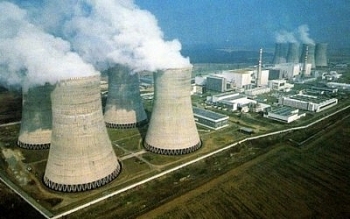 What is the Ukraine’s Largest Nuclear Plant with 6 Reactors What is the Ukraine’s Largest Nuclear Plant with 6 Reactors Fire breaks out at the Zaporizhzhia nuclear plant that has six out of Ukraine’s 15 nuclear energy reactors. |
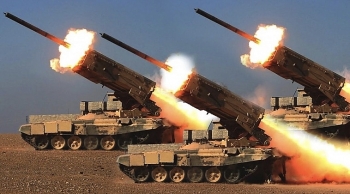 TOS-1: Russia's Most Powerful Non-Nuclear Weapon in Ukraine Battlefield TOS-1: Russia's Most Powerful Non-Nuclear Weapon in Ukraine Battlefield The TOS-1 thermobaric rocket system is said to be one of the "unique" weapons that the Russian military uses on the Ukrainian battlefield. |
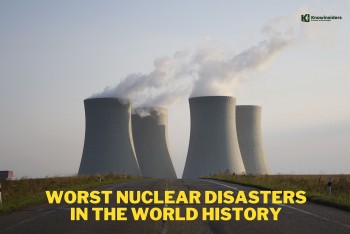 Top 9 Worst Nuclear Disasters In the World of All Time Top 9 Worst Nuclear Disasters In the World of All Time The worst nuclear disaster in the world – Chernobyl – caused devastation to Ukraine. In the history of the world, there were lots of nuclear ... |

